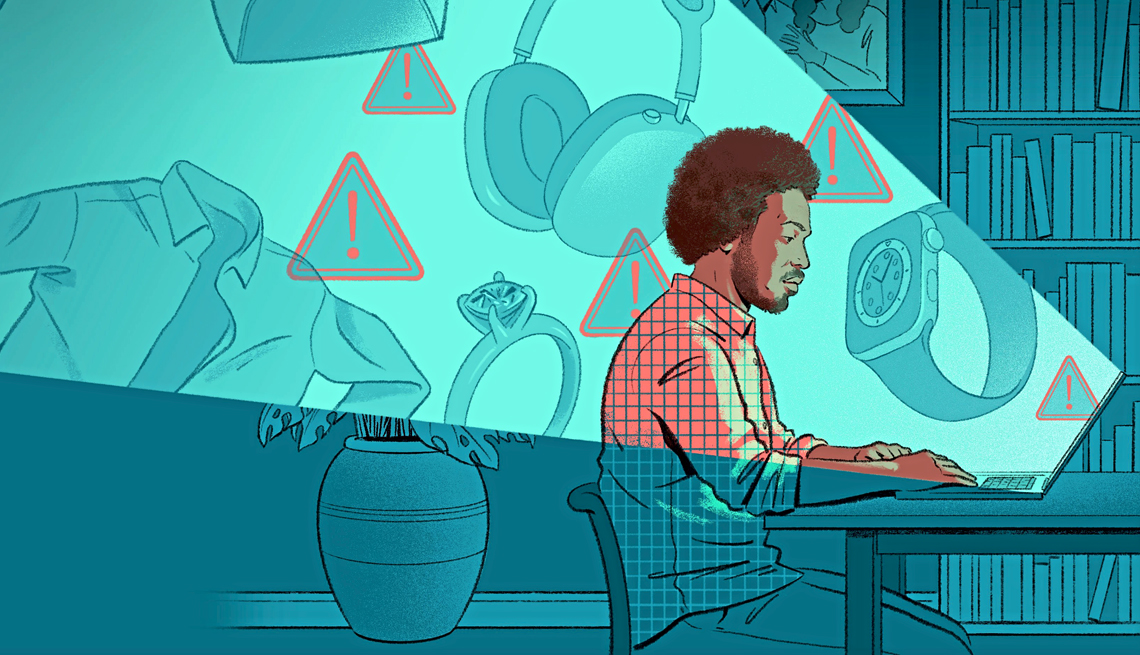AARP Hearing Center
As online shopping has surged, so have sales of counterfeit products. U.S. Customs and Border Protection, the agency that monitors imports into the country, seized $1.9 billion worth of knockoff goods in a recent seven-month period — up from $1.3 billion in the prior full year.
The items seized most often, according to the CBP, included handbags, wallets, clothing, footwear, watches, jewelry and electronics like headphones and smartwatches. Some of the nabbed fakes were pandemic-related products such as face masks, COVID-19 test kits and hand sanitizer. While many counterfeits are sold online, they also show up at flea markets and even in retail stores.
Counterfeits can be tough to spot. Even worse, some of them — such as electrical products, auto parts, contact lenses and cosmetics — can put your safety at risk. Protect yourself by taking these precautions.
1. Buy from reputable sellers
One of my golden rules for any retail transaction is to focus on whom you buy from as much as on what you buy. When buying brand-name products, buy directly from known national retailers. If you choose a smaller vendor, including third-party “marketplace” sellers on sites such as Amazon and Walmart, comb through user reviews and return policies, and check to see if the product is shipped from China; nearly 80 percent of fakes originate from there and Hong Kong, the CBP says. Be especially wary of small companies that advertise on social media sites. “That’s where a lot of the fraud lies,” says Saoud Khalifah, CEO of Fakespot, a company that analyzes and flags fake product reviews.
2. Get some backup
Seek out sites that will guarantee a product’s authenticity, especially if you’re buying luxury goods. The authentication program that eBay uses, for example, applies to select high-end handbags and watches, as well as certain sneakers. Products that pass inspection have an “Authenticity Guarantee” badge on their listings. Also check brand websites. Coach, Rolex and some other manufacturers have detailed guides to help you get the real deal, or they offer their own certificates of authenticity.
3. Recognize red flags
Super low prices are a big danger sign, according to the fraud experts at Redpoints.com, which helps businesses combat counterfeits. But even slightly lower prices can be a sign you’re not dealing with a legit retailer. Another way to spot sketchy listings is to download the Fakespot extension for the Chrome or Firefox browsers (available at Fakespot.com). When you’re shopping online on Amazon, Walmart, eBay and several other sites, you’ll be warned about suspicious reviews, which could help you avoid counterfeits. Another browser extension, from ReviewMeta.com, does the same thing on Amazon.
4. Pay with a credit card
If you receive a counterfeit product, or no product at all, and the seller is unresponsive, you can contact the card issuer and dispute the charge.
5. Inspect the merch
Look for shoddy workmanship and materials. If you’re buying a product advertised as new, beware of packaging that doesn’t appear authentic or lacks safety seals. Also check for off or weird smells. Shopping online a few years ago, I received a counterfeit bottle of a certain brand of hair spray I was looking for. The tip-off was the fragrance, which was different from the one at the hair salon.
6. Report fakes
If you get ripped off, report the incident by calling 800-BE-ALERT or by using the CBP’s reporting system at eallegations.cbp.gov. And for more info on avoiding fakes, check out stopfakes.gov.
































































